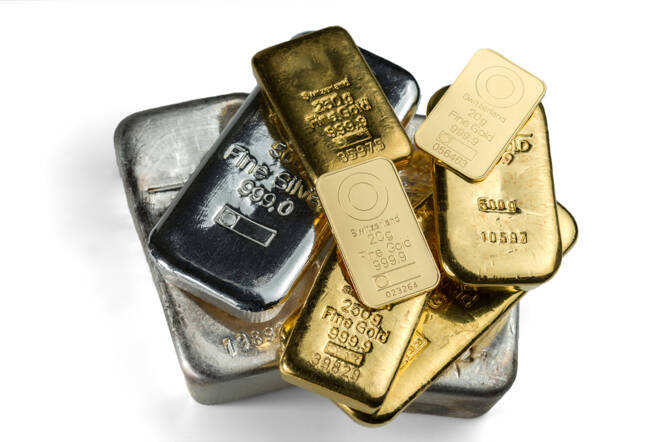Advertisement
Advertisement
What Does This Year Have in Store for Gold & Silver Trading?
By:
2022 is set to be a big year for precious metals. We’re only two months into the year, but the gold and silver markets have already seen significant activity.
This episode of ‘Live from the Vault’ unpacks the first few weeks of gold trading in 2022 and what its implications are for the gold and silver markets. In particular, Andrew delves deeper into the underlying drivers behind trading activity, and what this says about the nature of the paper and physical markets.
A bearish opening
2022 started off bearish. COMEX speculators, spurred by market-making insiders, started putting bids into an illiquid market, reacted predictably, and sold, sold, sold their gold.
This highlighted an ongoing trend in the gold markets. Ultimately, COMEX speculators’ lack of visibility into the physical supply and demand fundamentals and apparent ignorance of the fact that Basel III regulations are likely to reduce the influence of the paper markets, has resulted in them becoming pawns to insider-driven market movements.
This is where the banks who are bankrolling speculative positions rig the paper trading so that they can turn a profit. Indeed, without COMEX speculators, the last 50 years of market rigging would not have worked.
Sparking a change in the market
For those of us that monitor the paper to physical balance, there’s a structural change that is becoming evident between the physical and paper markets.
With gold still yet to reach the $2,000 per ounce sweet spot set by the BIS, traders are starting to see the increasing value in the precious metal as the physical market tightens.
In the meantime, it’s taking some time for the speculative paper market, driving these physical sales, to realize there is no real need to “sell the rally” in an increasingly physical marketplace. The underlying bullish drivers, which are going against COMEX sellers, emanates from a strong bottom-up physical demand. From here on in, the market is set to morph into a more physically-driven one, forcing a change in speculative trading behaviour, with significant implications for the market as a whole.
In the short term, while we are used to speculation overshoots on the downside, which have been common for decades and have supported the insiders, it’s likely that upside price overshoots could see this realisation swing prices back the other way. With the process irrevocably underway it’s important to remember that, as with any major change, the tide may take some time to turn.
The elephant in the room
Taking this one step further, it seems that we are barely scratching the surface of this bullish effect.
The OTC (Over-the-Counter) market, which is ten times the size of the physical market, has liquidity providers that cannot provide liquidity on positions that cannot be backed with physical delivery, particularly now that they face a Futures price jump due to the realities of the aforementioned structural change.
What’s more, following the implementation of Basel III NSFR, market-makers will be reluctant to put themselves into a position where they can’t quickly exit the market. All of this change eats into the limitless volumes of long, unbacked OTC paper positions and provides an opportunity for those who see the changes in the market.
Jai Bifulco, Chief Commercial Officer, Kinesis Money
About the Author
Jai Bifulcocontributor
Jai has a track record of driving business growth in director, executive, partner, advisor, and global leadership roles at both established international and early-stage companies. His diverse commercial and operational experience spans the FinTech, precious metals, mining, financial services, investment and trading spaces.
Advertisement
